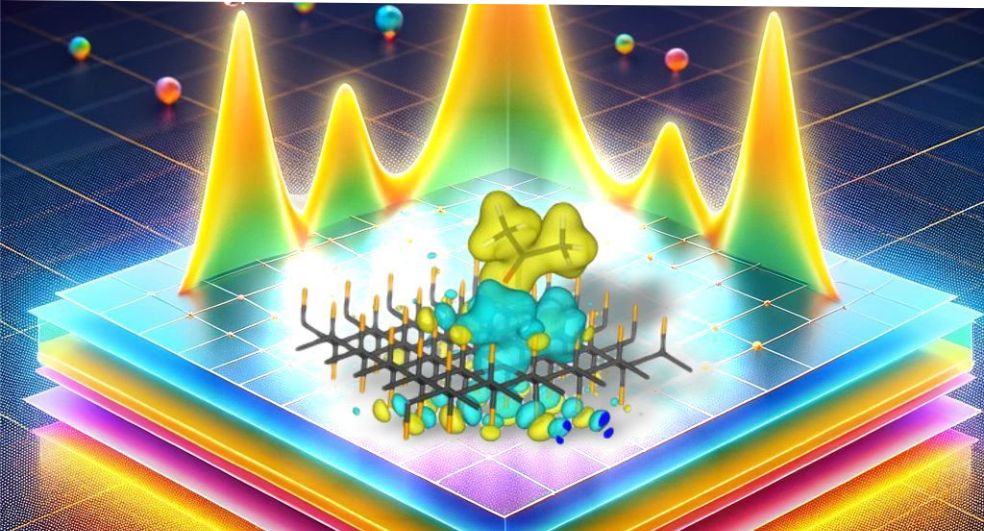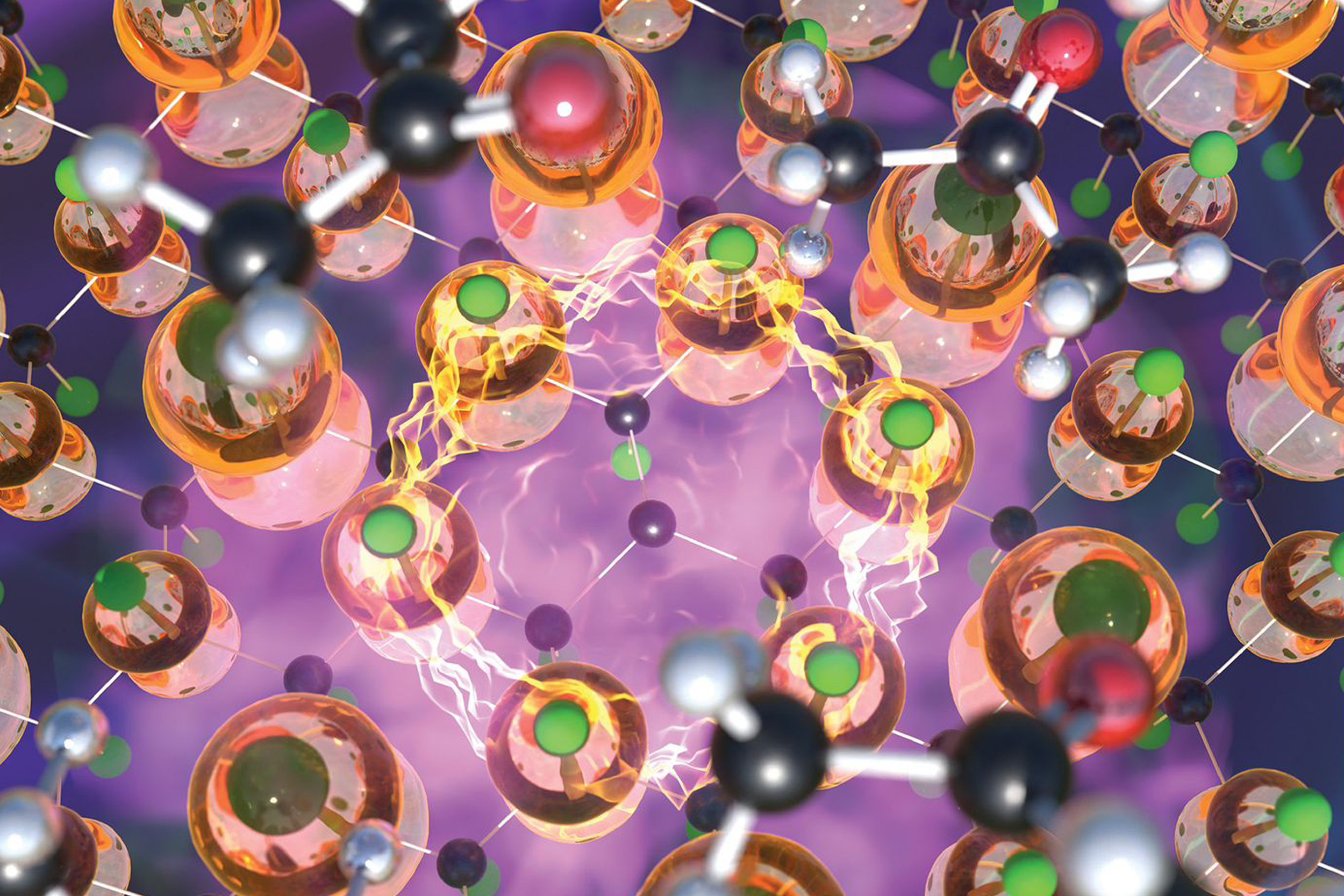The prestigious Journal of the American Chemical Society recently
published the discovery of a fascinating phenomenon by which
special particles known as polarons can be created in a two-dimensional
material, fluorographene. The research by scientists from
Palacký University’s CATRIN and VSB-TUO has opened new avenues
in the development of nanotechnologies and demonstrates
how technological improvements can be achieved by a simple
change of environment. The importance of the discovery was recognised
by its selection for the front cover of JACS.
Polarons are special electrically charged particles that can affect the properties of materials, including their conductivity and magnetic capabilities. They can be used in various advanced applications, ranging from solar panels to optoelectronic devices, molecular sensors and magneto-optical devices.

“The published research shows that polarons can be generated in fluorographene by using UV light, with the type of solvent in which
fluorographene is dispersed playing a key role. During experiments, we found that fluorographene in acetone under UV light produces a strong signal of polarons, indicating the formation of active spin states. In benzene, on the other hand, this phenomenon is less pronounced and almost non-existent in cyclohexane. The observed phenomenon is essential for understanding how the surrounding environment affects the formation of polarons,” explained one of the authors, Michal Otyepka.
The experiments were supported by theoretical calculations, which showed that polarons are formed near the radical sites of fluorographene, which interact strongly with acetone molecules. After UV irradiation of acetone, the charge from the solvent is transferred to the radical centres in fluorographene, resulting in transient magnetic states of a polaronic nature.
The research demonstrated the importance of the environment in which materials are used. By exploiting the interaction of materials with different solvents, new ways may developed for designing and producing materials with precisely defined properties for specific applications.




